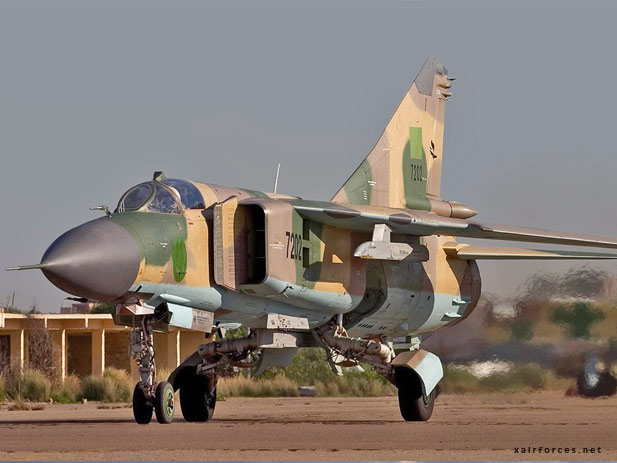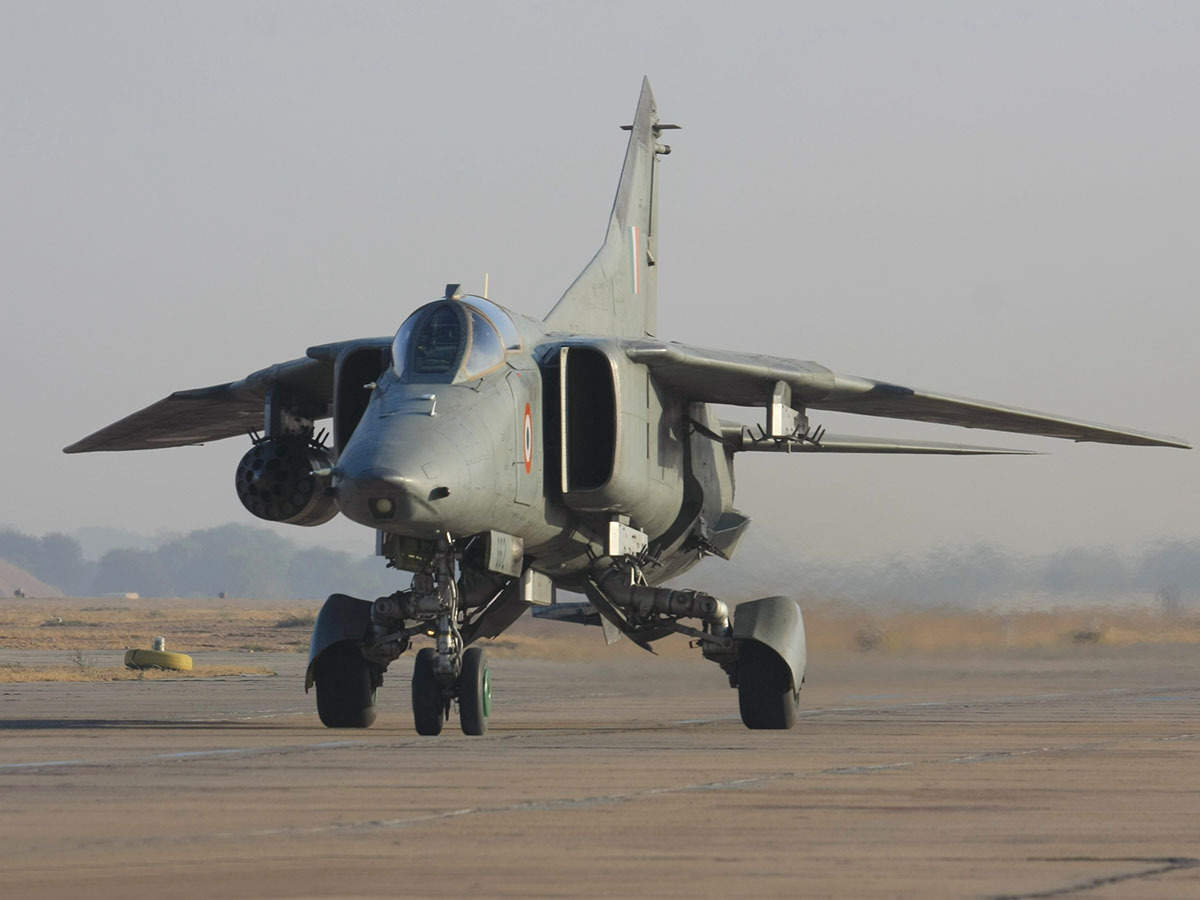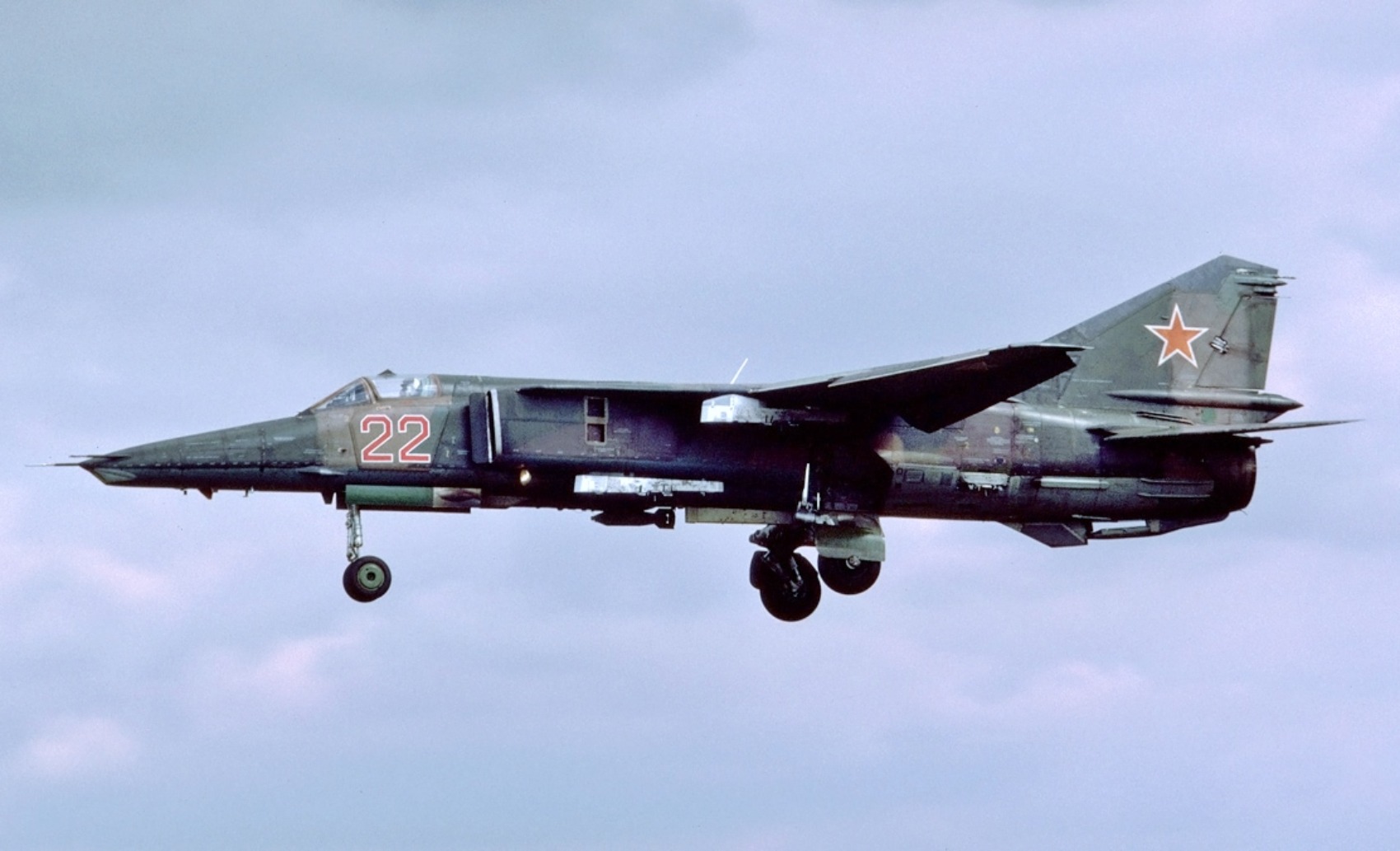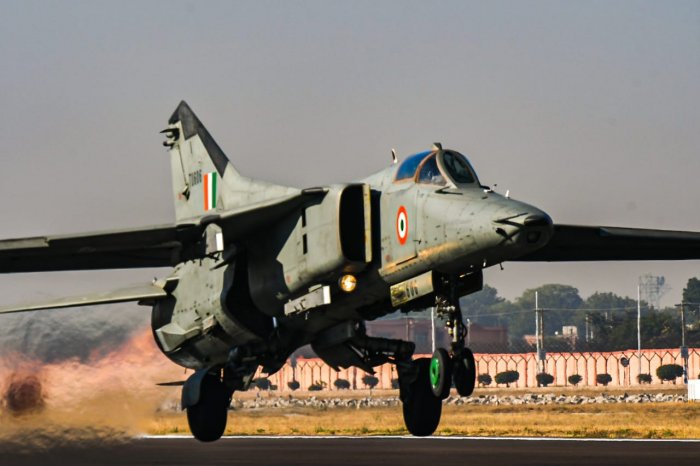
The MiG-27 was born to fill the void of attack aircraft of the Soviet Army after World Wαя 2
Unlike the MiG-23, the MiG-27 did not have widespread use outside Russia, as most countries opted for the Mikoyan-Gurevich MiG-23BN and Sukhoi Su-22 instead. It remains in service only with the Kazakh Air Forces in the ground attack role. All Russian, Indian and Ukrainian MiG-27s have been retired.
The MiG-27 featured several modifications compared to its predecessor, the MiG-23. It had a strengthened airframe, improved avionics, and increased fuel capacity to enhance its ground-attack capabilities. It was equipped with a 30mm cannon and could carry various types of air-to-ground missiles, rockets, and bombs.
One notable feature of the MiG-27 was its variable-sweep wing design, which allowed it to adjust the wing sweep angle during flight. This feature provided the aircraft with better performance in different flight regimes, including high-speed intercepts and low-level ground-attack missions.
The MiG-27 Flogger saw service with several countries, including the Soviet Union, India, and a few other nations. However, with the changing dynamics of modern warfare and the advancement of more sophisticated aircraft and weapons systems, the MiG-27 gradually became outdated.
In recent years, many countries retired or abandoned their MiG-27 fleets due to various reasons, such as aging airframes, high maintenance costs, and the availability of more advanced aircraft. This led to the aircraft being phased out of active service in most air forces, making it an abandoned attack aircraft.
It’s important to note that while the MiG-27 Flogger is no longer in active service with most military forces, it played a significant role during the Cold War era and in several conflicts around the world. Today, its legacy is remembered as a capable ground-attack aircraft within the Mikoyan family of aircraft.

The Mig-27 is a single-seat attack aircraft. It measures 17m in length (56 ft 0 in), 5m in height (16 ft 5 in), wingspan is 13.97m (45 ft 10 in) when spread, and only 7.78m (26 ft) when swept. Its empty weight is 11.9 tons, and maximum takeoff weight is 20.67 tons. The Mig-27 is powered by a Tumansky R-29-B-300 afterburning turbojet engine, with 78.5 kN dry thrust, and 112.8 kN with afterburner. Mikoyan’s iron bird can reach a top speed of Mach 1.7 at altitude, and Mach 1.09 at sea level, the combat range is 780 km.
The MiG-27 shares the basic airframe of the MiG-23, but with a revised nose – nicknamed “Utkonos” (“Platypus”) in Russian service, first introduced on the MiG-23B. Dissatisfaction with the MiG-23BN led to the further development of the basic airframe to accommodate a stronger undercarriage, simpler intakes and a shorter exhaust nozzle, without radar in favor of a downward-sloping profile for improved pilot visibility, a laser rangefinder and marked-target seeker.

Since the MiG-27 was intended to fly most of its missions at low altitude, the MiG-23’s variable intake ramps and exhaust nozzles were discarded in favor of a simpler fixed configuration, reducing weight and maintenance requirements. The aircraft also has larger, heavy-duty landing gear to facilitate operation from poorer-quality airfields. In accordance with the MiG-27’s strike and low-level attack requirements, provisions were made to mount missiles and precision-guided munitions, as well as retaining a nuclear capability in line with other Soviet combat aircraft by introducing specialized navigation systems.
In terms of ωєαρσиs, MiG-27 is equipped with unguided bσmbs, missiles, rockets, and a 30 mm Gryazev-Shipunov GSh-6-30 rotary cannon with 260 rounds, or a 23 mm Gryazev-Shipunov GSh-23 autocannon with 200 rounds.

Despite the success of the original MiG-23 interceptor model, the MiG-27 did not see similar results through overseas sales. Only some 1,075 MiG-27s made it into circulation with production running from 1970 to 1986. The MiG-27 saw its first combat in actions over Afghanistan during the Soviet invasion in the 1980s.
MiG-27 aircraft entered service with the Sri Lanka Air Force in 2000. During the Sri Lankan Civil Wαя, they saw considerable action bσmbing targets and providing close air support.

On 27 May 1999, during the Kargil Wαя, one Indian MiG-27 was lost due to engine failure. Since 2001, the Indian Air Force has lost more than 12 MiG-27s to crashes. In mid-February 2010, India grounded its entire fleet of over 150 of the aircraft after a MiG-27 crashed on 16 February 2010 in Siliguri, West Bengal. The crash was attributed to defects in the R-29 engines of the aircraft, suspected to have occurred during the overhauling of the aircraft by Hindustan Aeronautics Limited (HAL).





